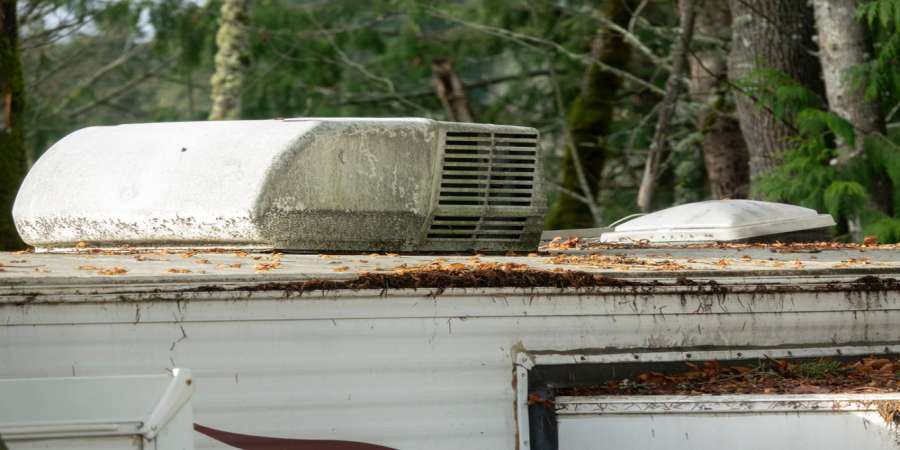Spot RV Water Damage
One of the great things about investing in an RV for your camping and travels is that it gives you more flexibility and protection from the elements than tenting alone. RVs provide comfort, warmth and a cozy home-like feeling which many RVers love when they’re been out on the road a while. Unfortunately, when it comes to water damage, RVs are easy targets. They’re most commonly outside, vulnerable to the seasons and changing weather, and in need of extra protection. Water damage can show up in your RV in a variety of ways including:
- Water stains on ceiling or walls
- Soft spots around water faucets
- Signs of plumbing leaks
Any sign of water damage is a sign that you need to take a closer look. What might start off as a few droplets pooling up could lead to something extreme that could cost several thousand dollars to repair. Once water damage has occurred, it usually requires professional servicing to get your RV back into good repair.
Check For Soft Spots Around Faucets
Soft spots in your RV are never good signs. Soft spots around faucets and the floor around faucets are especially troubling as they point directly to leaking water. When water has been left to pool up over time, a soft spot will form as the water affects whatever material it has been left to sit on. It is important to regularly check throughout your RV for soft spots, and to pay special attention to the areas around your faucets for vulnerabilities.
Water Stains on Ceiling Or Walls
If you’re checking out RVs to purchase and you come across water stains on the RV’s ceiling or walls, you should be very cautious about proceeding with that specific RV. Water stains are always a sign that water damage is in the works. Just because a water stain is small in size, or doesn’t have an evident discoloration (yet) doesn’t mean that damage behind the stain isn’t evident.
When water stains show up, it means that water has been left to sit on a certain area for too long. Water that has been left too long could be creating mold and mildew, which are a threat to you and your family’s health, compromising the structure of your RV and making the areas where they have occurred vulnerable.
Inspect Around Plumbing
Inspecting an RV’s plumbing system is a convenient way to tell if the RV has internal water issues that can be dealt with easily. To determine if the RV’s plumbing is leaking or vulnerable, you must pay special attention to the toilet area, sinks, faucets and the RV’s water heater. Anywhere that water comes from or travels to is an area that could be jeopardized if a leak goes undetected. Leaks will often show up in areas where metal is used for piping and corrosion is common, around the toilet if someone has caused an overflow leak, and anywhere that seals might not be secure, to name a few.
Turning on the water for a few minutes around each sink will help you determine if there are any problem areas you should pay extra attention to. Obviously, if water comes leaking or spraying out of a certain area, you should pay closer attention to see if the source of the leak comes from within the plumbing itself rather than just a wonky faucet head.
Know How To Spot Water Damage When Buying An RV
Shopping for an RV is hard enough without wondering if the rig you’re looking for has any water damage that might not be evident at first glance. Tell-tale signs such as mold growth around sealant, mildew smells, water buildup and soft spots are all important things to be on the lookout for when checking out a new-to-you RV. If you notice any of these occurring, you should proceed cautiously and ask a lot of questions about the rig you’re interested in.
